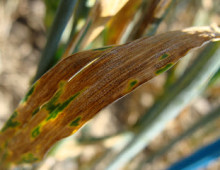Serpula genome project on MyCor Fungal Web Genomics
The other good news of this Bastille Day: our paper on the Serpula lacrymans genome is reported online July 14 in Science Express. The Domestic Dry Rot (Serpula lacrymans, Basidiomycete, Coniophoraceae) comprises two subgroups, S. lacrymans varshastensis, found in montane conifer forests in the Himalayan foothills, and S. lacrymans var lacrymans, cause of building dry rot, which diverged in historic time [Kauserud et al. (2007) Mol. Ecol.16: 3350-3360]. Read… [Read More]
